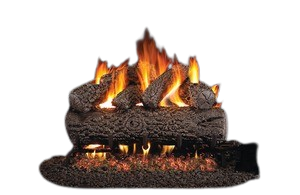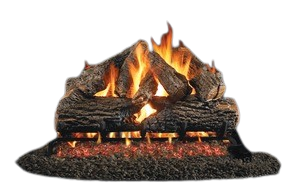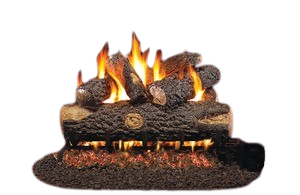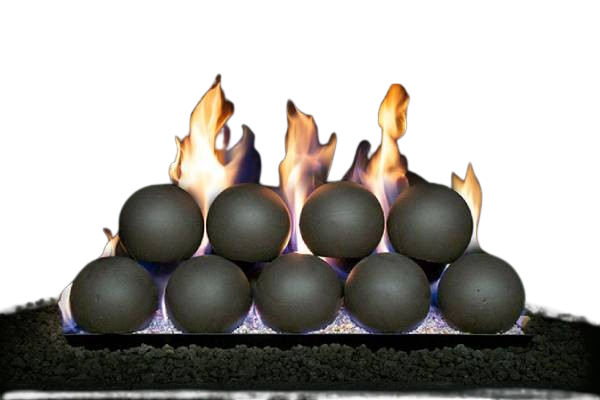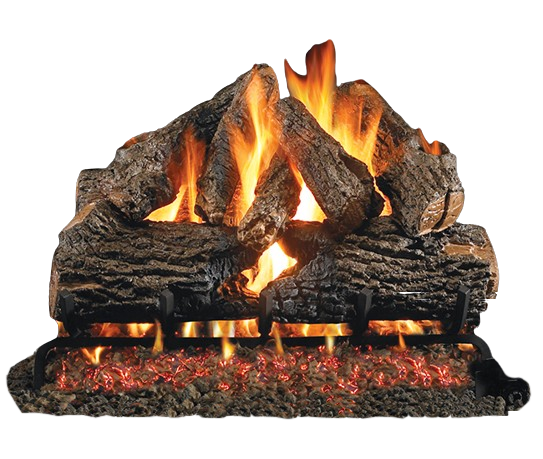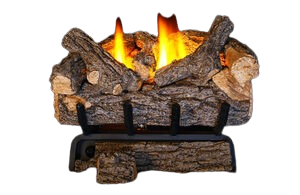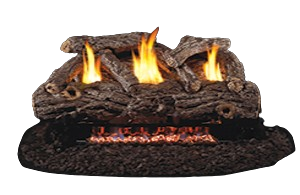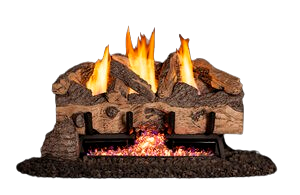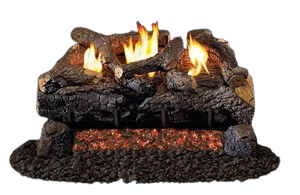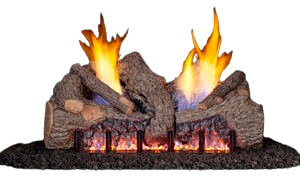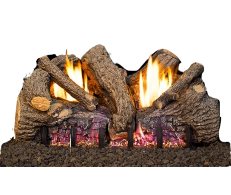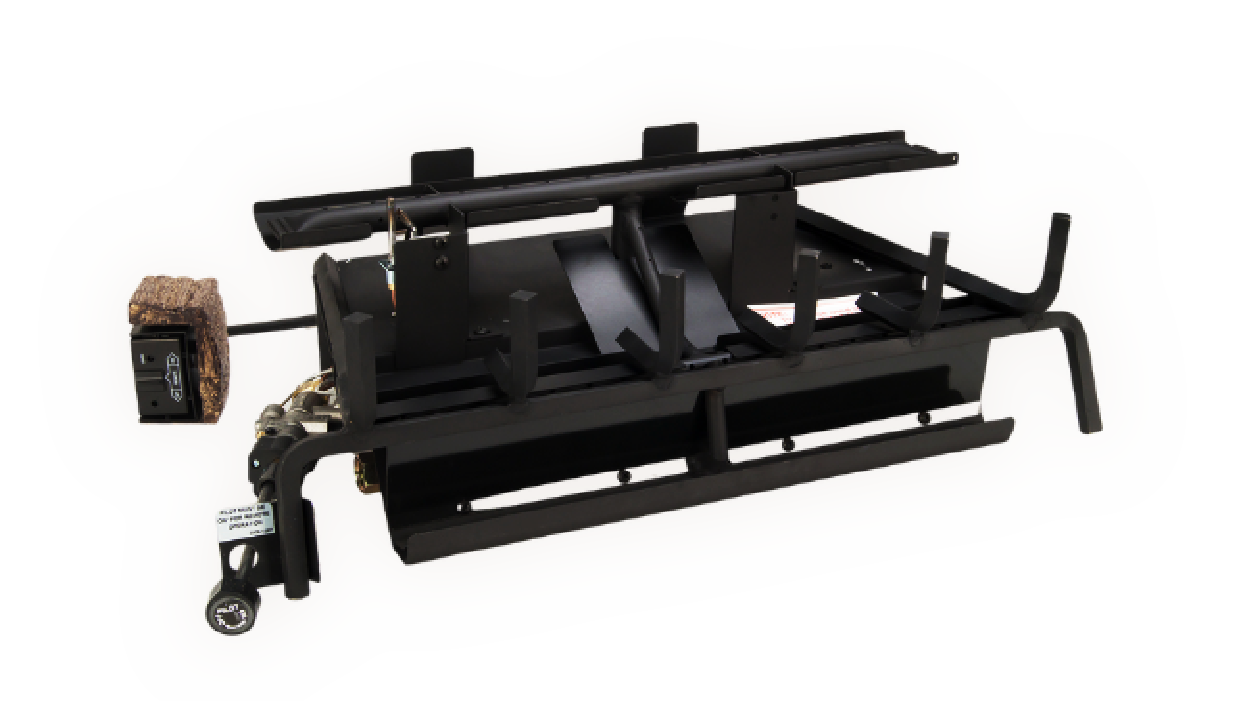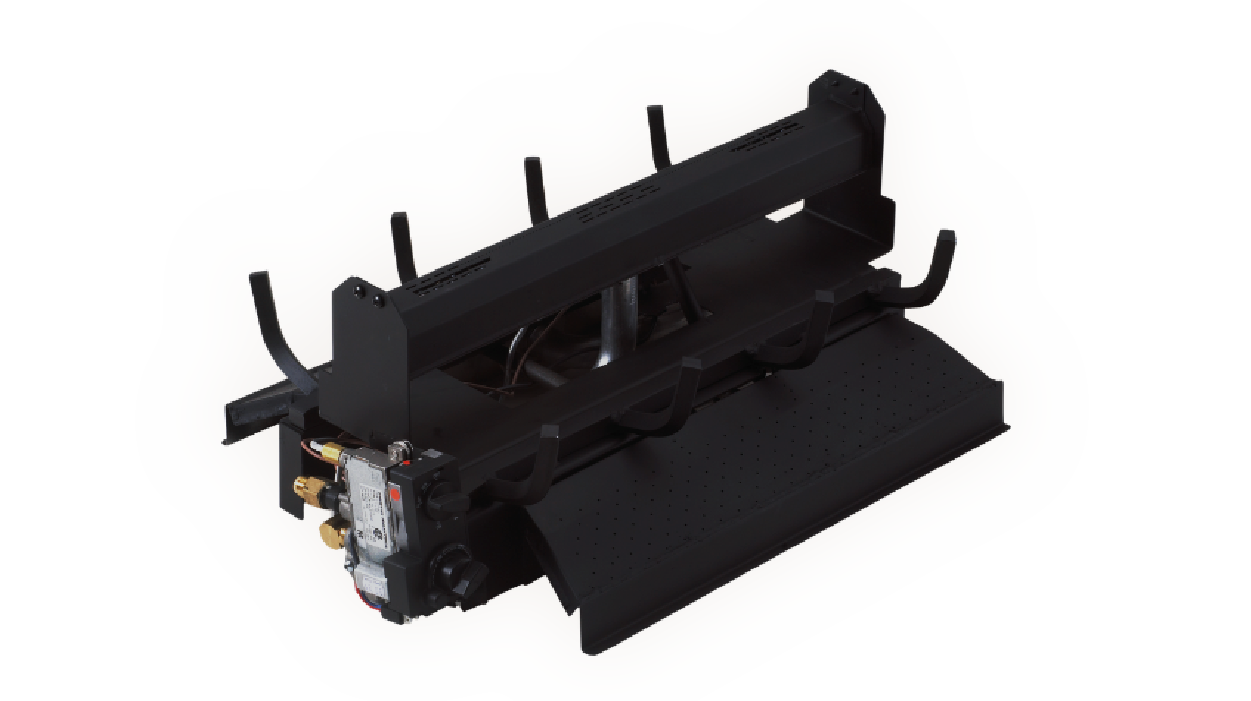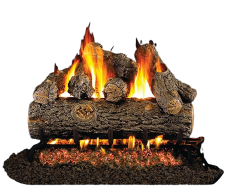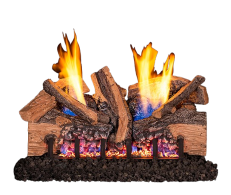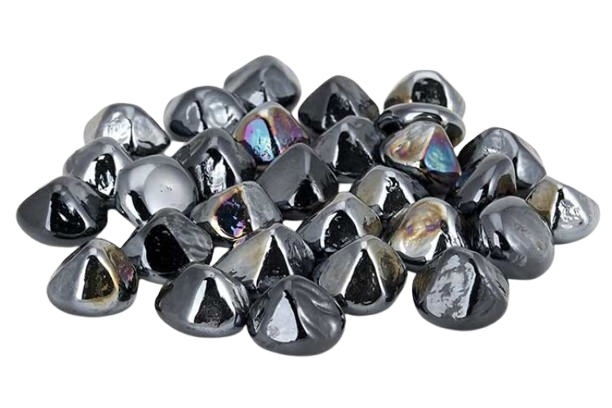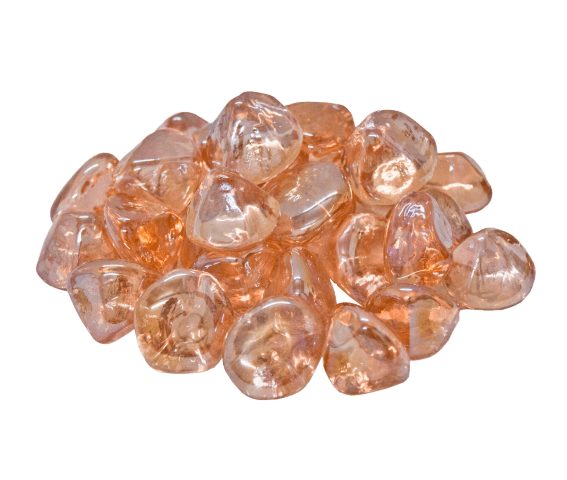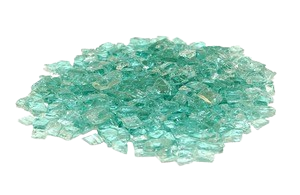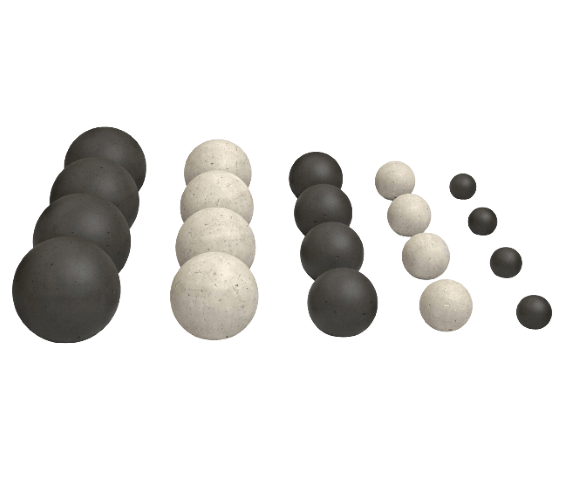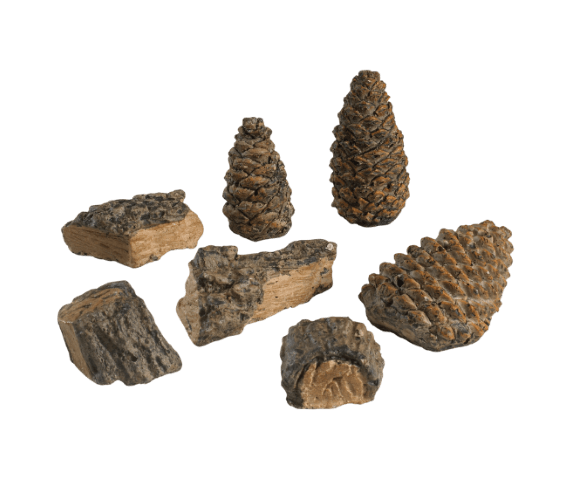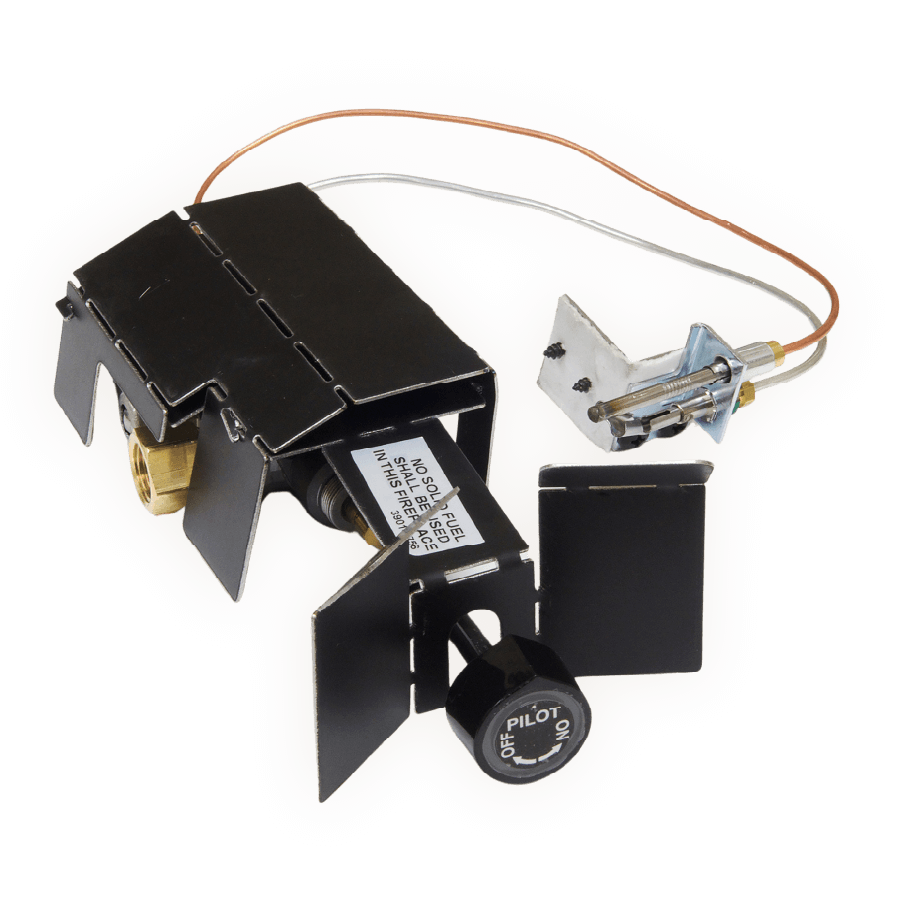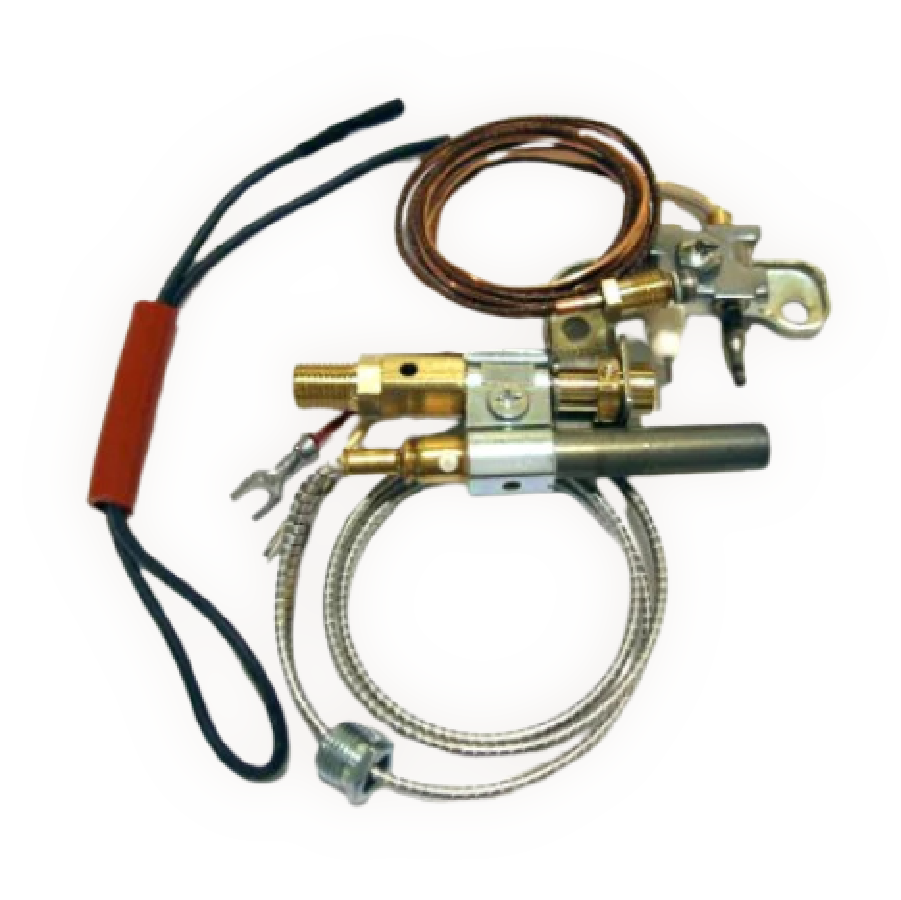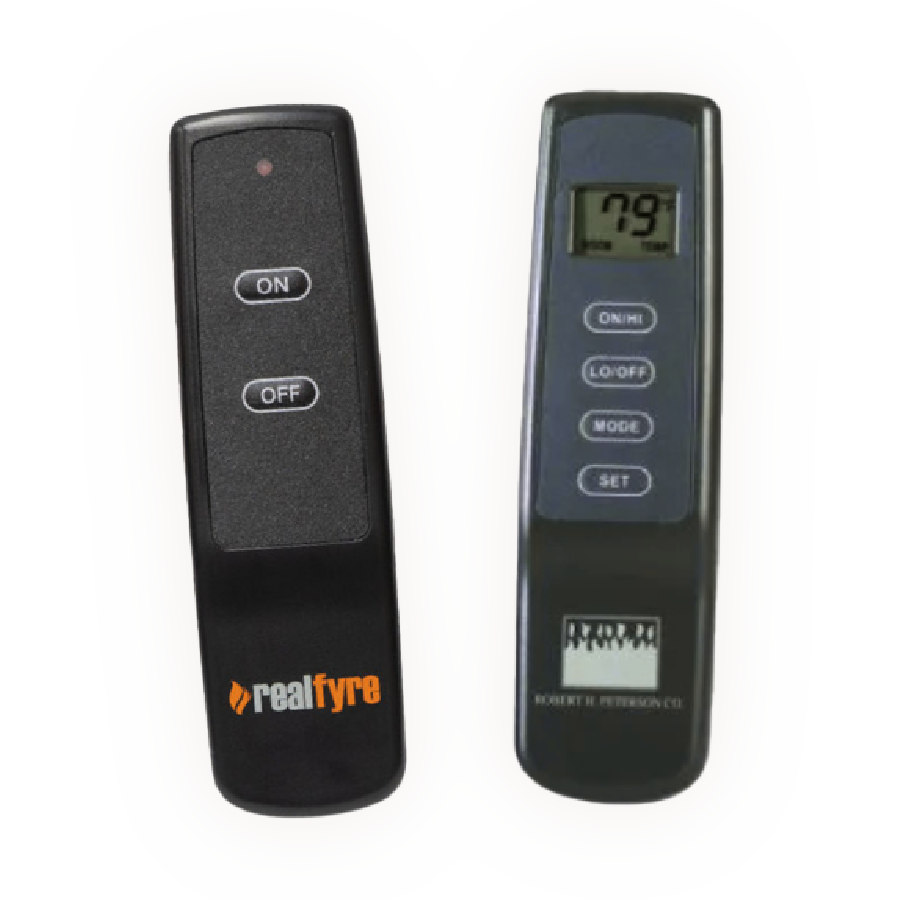What control valve do you have?
- Locate the valve knob on the right, and ensure the knob is in the "OFF" position.
- Turn the knob counter-clockwise to "PILOT".
- Once it is on "PILOT", push the knob fully in firmly.
- While holding it in, use a long fireplace match or a lighter and light the thermocouple.
- Keep the knob held down for 30-60 seconds after the pilot is lit, and then release the knob.
- Locate the valve knob on the right, and ensure the knob is turned to the "OFF" position.
- Turn the knob to "PILOT".
- Once it is on "PILOT", push the knob fully in firmly.
- While holding it in, use a long fireplace match or a lighter at the pilot burner.
- Keep the knob held down for approximately 60 seconds after the pilot is lit, and then release the knob.
- Locate the ignitor control knob (the bottom knob), and ensure the knob is turned to the "OFF" position.
- Push in and turn the ignitor control knob quickly past the ignite position until you hear a click.
- If you don't hear a "click" noise, turn the ignitor control knob back to "OFF" and repeat step 2.
- If you do hear a "click" noise, keep the control knob held in for 30-60 seconds after the pilot is lit, and then release the knob.
- Locate the valve on the side of the unit, and ensure the control knob is turned to "OFF".
- Turn the control knob counterclockwise to "PILOT".
- Push the control knob firmly and fully in and hold.
- Hold a long lit fireplace match or a lighter near the thermocouple to light the pilot.
- Continue to hold the control knob in for approximately 60 seconds after the pilot is lit, and then release the knob.
- Ensure that your burner system is completely off and cool.
- On the remote receiver, there will be a 3-position switch - slide this to the remote position.
- Use the tip of a pen or a paperclip to push the "learn" button, and release it. You should hear a beep.
- Press and hold the ON or ON/HI button on your remote.
- A series of beeps should then be heard, which indicates that the remote system is now synced.
Calculating the size of the log set that can fit in your fireplace can be tricky, which is why we do it for you! We highly recommend you to click here to go to our fireplace sizing calculator instead of trying to calculate it yourself.
If you want to do it on your own, here's what you'll need:
- Measurement of the front opening of your fireplace
- Measurement of the back wall of your fireplace
Add these two numbers together, and divide it by 2. (ex: 36 + 26 = 62; 62/2 = 31). This will give you your center point. Subtract 6 from your center point and that will be your ideal log set size (ex: 31 - 6 = 25). If your center point isn't an exact set size, round down to a lower size (ex: 25 would round down into a 24-inch set). If you are using a G45 burner, subtract 8 instead of 6.
You may also need to take into account the depth and the height of your fireplace.
Warranty Information
All Real Fyre ceramic refractory gas logs (vented and vent-free) are warranted for as long as you own them.
All Real Fyre burners (vented and vent-free) are warranted for ten (10) years.
All Real Fyre glass, gems, and fiber-ceramic blend logs are warranted for five (5) years.
SPK-26 controls are covered for three (3) years "All Parts" warranty.
APK-17 valves are covered for two (2) years.
All other Peterson valves, pilots and controls are covered by a one (1) year limited warranty (excluding batteries).
If you purchased your Real Fyre products through us, please contact us to submit a warranty claim.
Remote is not working for pilot - Troubleshooting
Ensure that the batteries in the receiver inside the fireplace are fresh. Over time, batteries can lose their charge, which can prevent the remote from functioning properly. Replace the batteries with new ones to see if this resolves the issue.
Check to make sure that the valve is in the "on" position. If the valve is not turned on, the remote control will not be able to operate the fireplace.
If the remote transmitter or the receiver is defective, the remote will not work. You may need to purchase a new remote or receiver.
Sometimes the remote and the receiver can lose their synchronization. Your owner's manual should have the instructions on how to do this. This process usually involves:
- Switching the receiver to the "REMOTE" position.
- Gently pressing and releasting the "LEARN" button with a paperclip (like ejecting a SIM card).
- You should hear an audible "beep".
- When you hear the "beep", press the transmitter "ON" button and release.
- You should hear several beeps if it successfuly resynchronizes.
Ensure that there are no obstructions blocking the signal between the remote and the receiver. Objects such as furniture or decorations can interfere with the signal and prevent the remote from working properly.
Try resetting the receiver by turning it off and then on again. This can sometimes resolve issues with the remote not functioning.
Can't light your pilot - Troubleshooting
Verify that the gas supply to your fireplace is turned on. If the gas supply is off, the pilot light will not ignite.
Check the batteries in your remote control and receiver. If the batteries are low or dead, replace them with fresh ones to ensure proper operation.
If the gas supply is on and the batteries are fresh but the pilot still won't light, the issue might be with the thermocouple, pilot assembly, or valve. These components can become faulty over time and may need to be inspected or replaced by a professional.
If none of these help, fill out our free parts assessment and we'll help you determine what parts you might need to replace.
Excessive sooting - Troubleshooting
While some sooting is normal, it shouldn't be excessive. If you notice excessive sooting, make sure that you follow these guidelines:
If you have a vented gas log set, we recommend you setting up your logs in accordance to your log placement guide. This is the best position for your logs to be in to minimize sooting, while still looking great!
If you have a vent-free gas log set, you must set up your logs in accordance to your log placement guide. The flame from your burner touching the logs too much will produce heavy sooting and deadly amounts of carbon monoxide since there is no ventilation system.
Incorrect installation of burner (ex: gas pressure too high or too low). Contact your gas installer or a licensed gas plumber to take a look at this for you.
Incorrect placement of burner media (ex: sand, vermiculite, or glowing embers). Follow the sand/vermiculite/glowing embers placement guide in your owner's manual.
Your log set may be too large for your fireplace. Before purchasing, we highly recommend you to use our fireplace sizing guide in order to get the correct size for your fireplace.
Fireplace does not stay lit - Troubleshooting
Some things that may be causing it to overheat are:
- Your log set is too large for your fireplace (you should have 6 inches of room on both sides).
- Your damper may not be fully open.
- Your log set was incorrectly installed.
- Your remote receiver is too close to the fire.
There must be a passageway for air to get into the fireplace so it does not get smothered. If there are doors present, they must be open during operation.
Your thermocouple might be defective. Fill out our free parts assessment so we can help you figure out which one you need.
Fireplace is beeping - Troubleshooting
Replace the batteries in your remote transmitter and your remote receiver.
Move your remote receiver further away from the flame, or out of the firebox entirely if possible.
Fireplace flame is low - Troubleshooting
Have your gas installer or a certified gas technician come out and verify the gas pressure in the water column.
The orifice where your gas comes from might be plugged. Clean it with compressed air.
Your valve may be defective. Fill out our free parts assessment so we can help you figure out which one you need.
Odor coming from fireplace - Troubleshooting
Your logs might be improperly placed. Refer to your log placement guide on how to set them up.
If you have a vent-free fireplace, your logs must be "burned in". This is normal, and should go away after 60-90 minutes of use.
After a period of non-use, you may experience an odor when turning on your gas log set. Just like a heater, this is just dust burning. This is normal, and should go away after all of the dust has been burned off.

